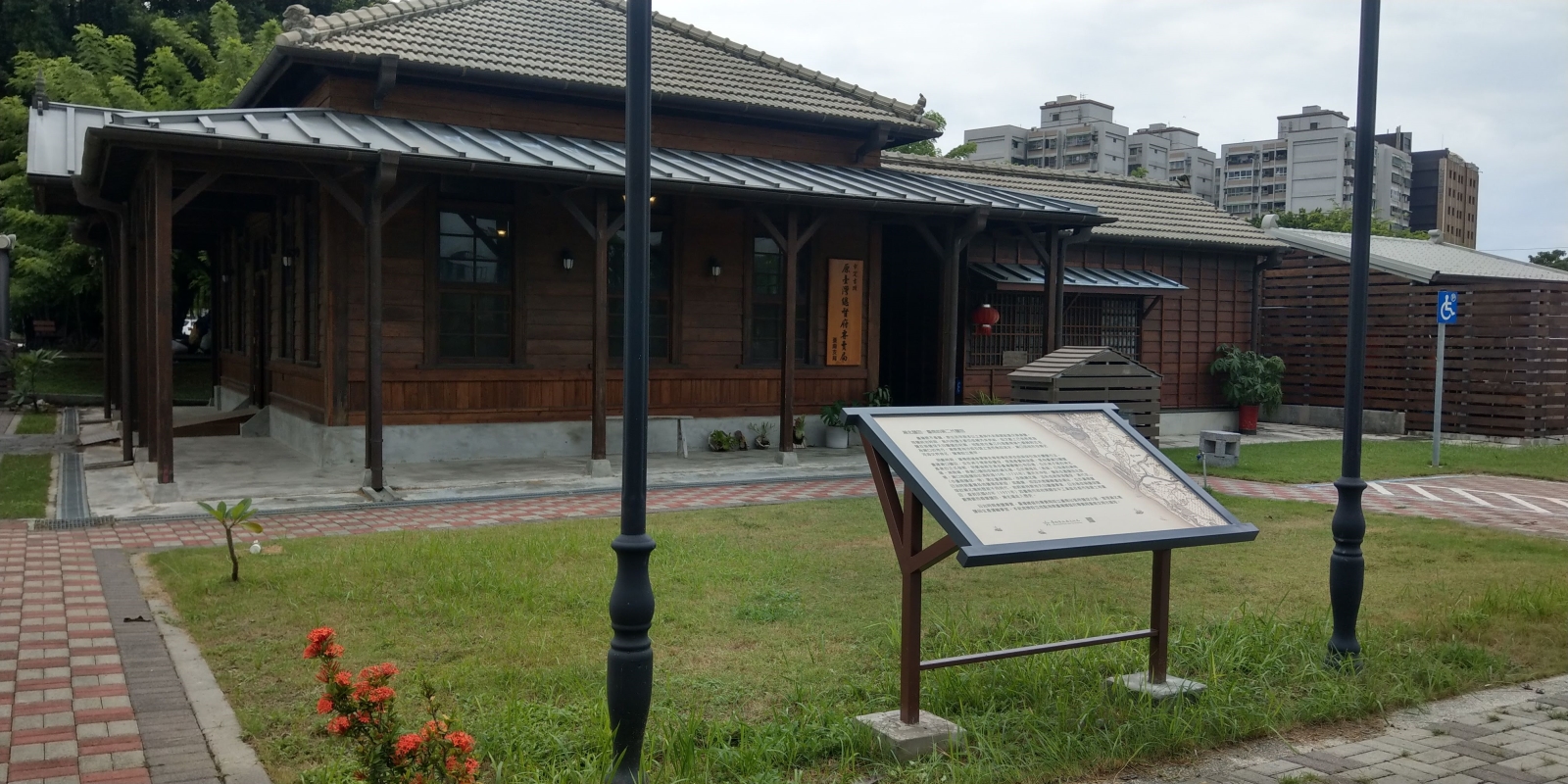瀨北鹽田—臺南的第二代鹽田
臺灣原不產鹽,原住民早期多以土產與外來商貿船隻交換食鹽。荷蘭統治時期,島內用鹽主要仍依賴外來供給,但文獻上已有煎煮海鹽及築鹽埕天日曬鹽的記載,地點就在臺江內海最南端七鯤鯓附近名為瀨口的地方。瀨原意為沙或石頭上淺而急的流水,瀨口因地形及鄰近河海交界得名,鹽場設立最早。
明鄭時期,據傳諮議參軍陳永華教導民眾改良築埕引海水曬鹽方法,重建瀨口鹽田,並在洲子尾新設鹽埕,提高產量與品質,是為臺灣日曬鹽產業的正式發軔。明鄭後期至清初臺灣曬鹽已有四場:位於洲子尾的洲北場、洲南場、原瀨口鹽田改稱的瀨北場、位於興隆莊(高雄)打狗澳的瀨南場。瀨口地區鹽田於清乾隆15年(1735年)遭洪水沖毀,鹽民在舊鹽田北面(今臺南鹽埕一帶)選址重建鹽田,改稱瀨北場,並形成新聚落鹽埕。清代及日治時期臺灣各地鹽場或新設,或廢棄,或因洪患輾轉遷徙場址,位於臺南鹽埕的瀨北場則歷經不同時代,始終維持原地天日曬鹽事業,日治後改稱鹽埕鹽田,直到民國60年(1971年)因臺南市政府開闢安平工業區及都市發展土地重劃需要而廢棄鹽田,瀨北場走入歷史。
日治時期食鹽專賣,臺灣總督府專賣局設立臺南出張所鹽埕分室,管理瀨北場鹽田生產運輸事宜。本紀念牌設立地點為原臺灣總督府專賣局臺南支局古蹟旁。
Laibei Salt Flats – A Second-Generation Saltern in Tainan
Salt production was not native to Taiwan. The island’s early indigenous inhabitants exchanged local products for salt from foreign trade vessels. Throughout the Dutch colonial period, the majority of salt supplies to the island still came from foreign sources; however, literature of that era documented the cooking of sea water to extract salt, and the construction of salterns in the vicinity of the Laikouarea, near Kunshen Seven, at the southernmost tip of the Taijiang Inner Sea. Laikouderives its name from its topography and its location near an estuary: the character “lai” in “Laikou” originally referred to water rushing over sandy or rocky shallows. This was where Taiwan’s earliest saltern was established.
According to folklore, Chancellor Chen Yong-Hua of the Kingdom of Tungning (1661 to 1683) instructed the public on methods of modifying the salterns in order to draw in seawater to be dried by the sun. It was then that the Laikou Saltern was reconstructed, and new salterns were built in Zhouziwei to boost production and quality. This harkened the beginning of the solar evaporation salt industry in Taiwan. Four salterns were in operation between the late Kingdom of Tungning period to the early Qing Dynasty, these include: the Zhoubei Saltern and Zhounan Saltern, located on Zhouziwei; the Laibei Saltern, formerly known as Laikou Saltern; and the Lainan Saltern located in Dagoau of Xinlung Village (Kaohsiung). Prior to this, the saltern in Laikou was the only saltern in Taiwan. It was destroyed by a flood in 1735, then subsequently reconstructed by salt farmers at a location north of the original saltern (near the Tainan Yancheng today), and renamed Laibei Saltern. During the Qing Dynasty and the Japanese colonial period, many new salterns were constructed while old ones fell into disuse, yet other were relocated due to flooding, throughout the years, only the Laibei Saltern in Yancheng, Tainan remained at the same location where it continued in solar evaporation salt production. After the Japanese colonial period, it was renamed the Yancheng Saltern and remained in use until 1971, when the Tainan City Government decommissioned the saltern to make way for the construction of Anping Industrial Park as well as for urban development and rezoning. The Laibei Saltern was then relegated to history.
The sale of food-grade salt was monopolized during the Japanese colonial period. The Tainan Branch of the Office of the Taiwan Governor General Monopoly Bureau established an office in Yancheng to administer to production and transport at the Laibei Saltern. This commemorative plaque has been erected beside the heritage site of Former Tainan Branch of the Office of the Taiwan Governor General Monopoly Bureau.


